Why hello there, and thanks for joining me on my next expedition of London. Today’s journey will see me explore south of the capital, as I begin at the iconic Clapham Junction station, take a stroll through Wandsworth Common and Wandsworth Bridge, before passing by Battersea Railway Bridge, and concluding at Battersea Bridge. It’s a walking adventure which has everything you love in London – the Thames, bridges, and parks!

I start my walk at Clapham Junction train station, which is actually technically based in Battersea. Before there was a railway, the area was rural, and was known for growing lavender, which is where the street name outside the station, ‘Lavender Hill’ derives from. There was a coach road from London to Guildford near where the south part of the station is now located.
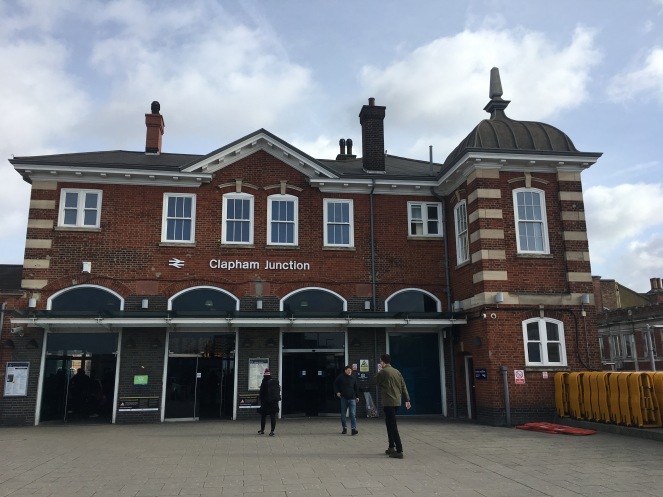
On 21 May 1838 the London and South Western Railway was formed after the merging of the London and Southampton Railway, which lead to the opening of the line from Nine Elms to Woking. This was the first railway through the area, however, it still didn’t have a station on the site. A second line between Nine Elms and Richmond opened on 27 July 1846, and then a line opened to London Victoria in 1860. This lead to the opening of Clapham Junction on 2 March 1863 as an interchange station between the lines from London, Brighton, the South Coast, and West London.

Despite being in Battersea, the station has been stated as located in Clapham. One of the reasons given for this was partly due to the railway companies trying to attract middle and upper class clientele to the site, as Clapham was seen as more fashionable than the industrial Battersea, so they used this factor for station’s name.
Clapham Junction today has about 2,000 trains passing through it every day, which is the most for any station in Europe. At peak times 180 trains per hour will pass through the stations, with 117 stopping. About 430,000 passengers during the day on weekdays will pass through the station, which still doesn’t make it the highest by volume, as Waterloo has that honour.

With 17 platforms there are mainline links from London to Surrey, Kent, Sussex, Hampshire and the outskirts of London, as well as other parts of London via the London Overground. The station announcements are currently made by Celia Drummond and the late Phil Sayer.
As someone who uses the station on a regularly basis during peak hours, it’s a whole experience in itself, with the hustle and bustle of busy commuters, all with their own set destinations in mind, and there’s no time to stop and ponder!

- Clapham Junction Station
I’ll now leave the station to head to my next destination, Wandsworth Common. Now of course, I could hop on a train to the common which has a station right next to it, but this is a walking blog of course!
Just outside the station there’s a memorial plaque to remember those who lost their lives in the Clapham Junction railway crash back on 12 December 1988, when three trains collided with each other, killing 35 people and injuring 484.

Walking from there I head to the 69.43 hectare (171.6 acres), Wandsworth Common, which is a real south London gem of natural wonders and recreation. Back in the 1860s with the expansion of London, its railways, and the 4th Earl of Spencer selling off parts of the Common, there was demand to protect the area. This resulted in the Wandsworth Common Act 1871 being created to help ensure its future was secure.
After the creation of the London County Council (LCC) in 1890, which became the owner of the Common, it would turn the rubbish-strewn unkempt space, into the island of tranquility that we see today. In 1965 the LCC became the GLC, and the ownership of Wandsworth Common was handled by Wandsworth Borough Council. In addition to its own Act of Parliament, The Commons Act 2006 also ensures its safeguarding. The Common is split into twelve separate sections, and includes everything from an area for football, cricket and rugby, a playground, trees and plants, as well as a large lake.

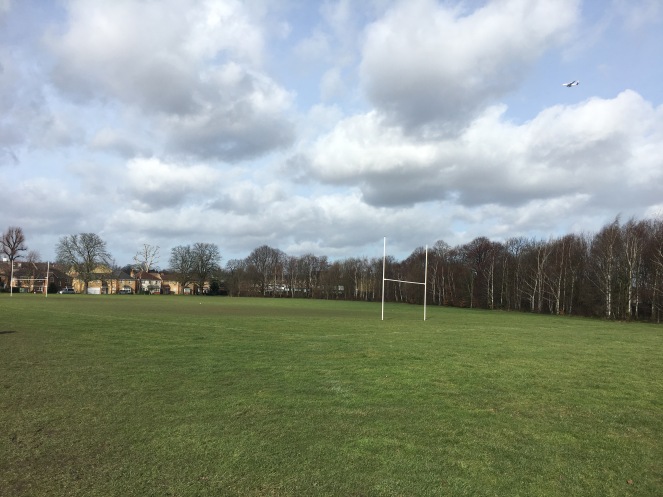
Wandsworth Common is classed as a site of importance, so much so it has a Grade 1 status for nature conservation. It includes nine different ecological habitats, which cover grassland, woodlands, meadows, trees, plantation, amphibian wetland, and the pond and lakes.
The grassland throughout the Common is ideal for wild flowers, butterflies, grasshoppers, and other insects, and the tiny holes in the ground provide a solitary residence for bees.


There are a number of woodland areas whilst you walk through the vast space of the Common, which are a perfect place for grasses, shrubs, mosses, wild flowers, and plants to thrive. As well as the plants, the woodlands are a great habitat for beetles, centipedes, birds, and bats to enjoy.
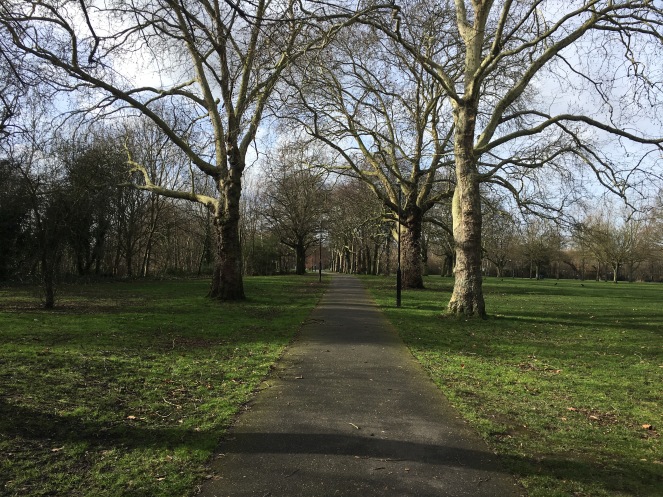


One of the distinct elements of the Common is its water oasis which is teeming with life – from ducks and geese, to pond skaters and dragonflies, and fish and newts. It’s somewhere that covers every facet of nature and everything you could wish for to help all creatures and plants to survive and thrive. Being someone who loves being in the great outdoors and always loves exploring natural beauty like this, it’s refreshing and exciting to know that as time goes on, these essential areas are kept and maintained so splendidly.
This area does remind me of my walk to the neighbouring Clapham Common which has the perfect beautiful combination of ponds, green space, and trees too.
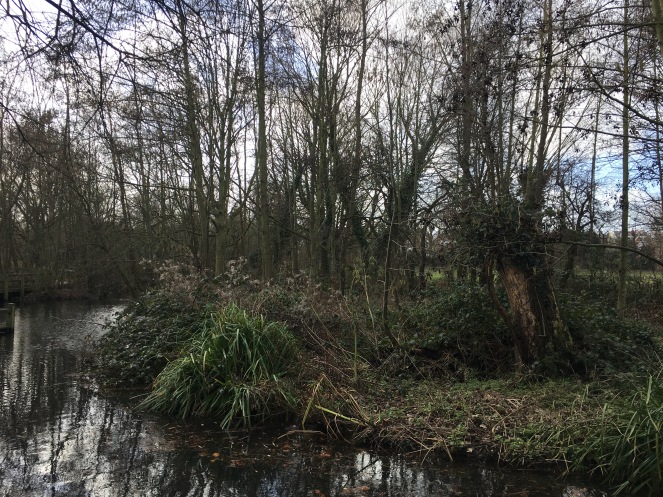

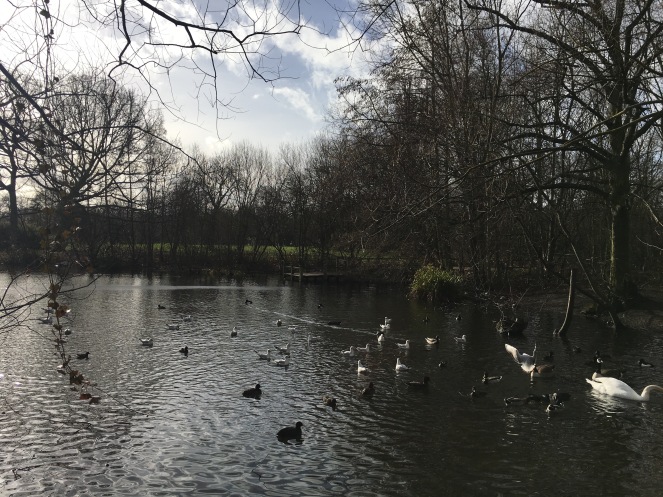








It’s time to leave Wandsworth Common and head down the long Trinity Road to my next stop, Wandsworth Bridge. The first bridge on the site was a toll bridge built by Julian Tolme in 1873, in the expectation that once the Hammersmith and City Railway terminus was built there would be an increase in the number of people wanting to cross over the river at this part along the Thames.
However, the railway terminus was never built and drainage problems made it difficult for vehicles to cross, which ultimately made Wandsworth Bridge commercially unsuccessful. As a result in 1880 it was taken into public ownership and the toll was removed. Although in 1926 a Royal Commission suggested that it should be replaced as it was too weak and narrow for buses.


Just over ten years later the bridge was demolished, and replaced with a steel cantilever bridge designed by Sir Thomas Peirson Frank, which opened in 1940, and is the bridge we see today. When it was opened it was painted in dull shades of blue as a camouflage against air raids, and this colour has remained ever since.
The length of the bridge is 650ft (200m), with a width of 60ft (18m). It proceeds Fulham Railway Bridge and follows Battersea Railway Bridge, and is one of the busiest bridges in London with over 50,000 vehicles a day going over it. It’s been given the name by many as being one of London’s most boring bridges, but I don’t buy that as I really love the colour of it as it compliments the blue of the river and the sky nicely.
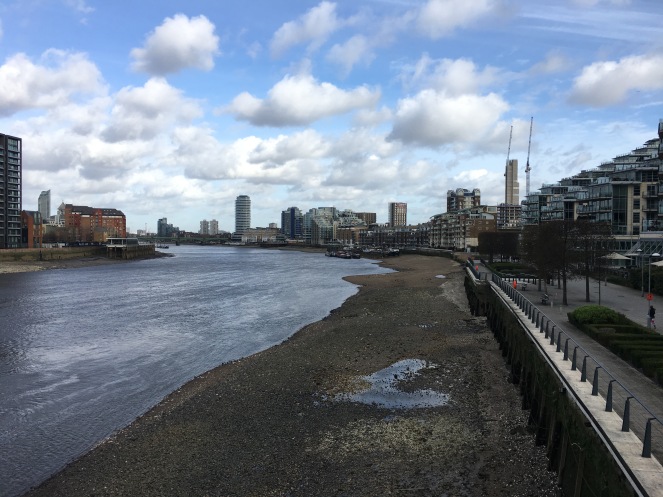

Walking beyond Wandsworth Bridge along the Battersea Reach apartment complex, you walk past The Tidal Thames planting project which is a series of plants that were laid out near the river banks in 2005 when the complex was developed. Amongst this and across the Thames you’ll find an array of fish, birds, creatures, insects, and plants.

Whilst I stroll along the river towards Battersea Railway Bridge I pass this helipad and was lucky enough to see the helicopter landing, which was a pretty surreal experience!

The walk takes me to the second of the three bridges that I’ll discover on my walk, Battersea Railway Bridge. Designed by William Baker, who was the chief engineer of the London and North Western Railway, the bridge opened on 2 March 1863 at a cost of £87,000 (£8.2m in today’s money). The bridge is 754ft (230m) in length, with a width of 34ft (10.5m), and carries two railway tracks on it which lead into Imperial Wharf station.

Consisting of five 120ft (37m) lattice girder arches set on stone piers, the bridge has been strengthened and refurbished twice – once in 1969 and again in 1992. The bridge was given the honour of Grade II listed status in 2008 to protect it from unsympathetic development. I personally really like Battersea Railway Bridge, especially the colour and cross design, something very satisfying and aesthetically pleasing about it. Also I find the fact that neither cars nor pedestrians can go across it adds to its uniqueness, as there aren’t too many bridges in London which are specifically for trains.

I’ll now keep walking along the river onto my final sight on my walk, Battersea Bridge. Like with the original Wandsworth Bridge, the first Battersea Bridge was also a toll bridge, and was commissioned by John, Earl Spencer, who’d recently acquired the rights to operate a ferry on the Thames. There were plans to build the bridge out of stone, however, this was deemed to be too expensive, so a cheaper wooden one was built instead. The original bridge was designed by Henry Holland and only opened to pedestrians in 1771, and then to vehicle traffic in 1772.
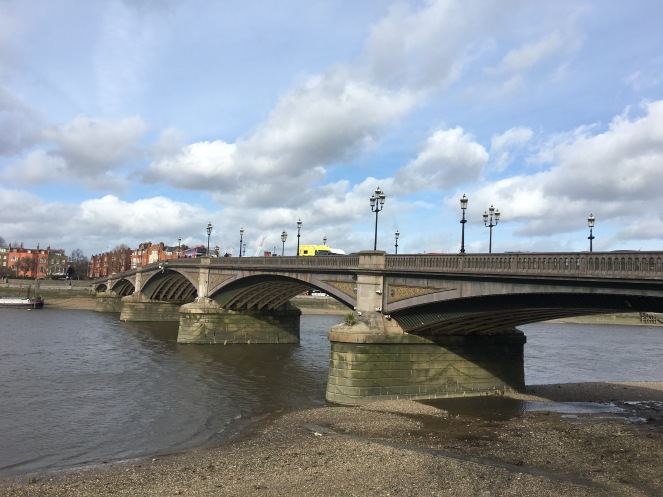
Unfortunately, the bridge was poorly designed, and quite dangerous for those passing over it, as well as ships and boats who would often collide with it! Iron girders were installed, in addition to removing two piers from it to avoid the ships from colliding with it. It was in fact the last surviving wooden bridge on the Thames despite all its problems, and has inspired many artists including J. M. W. Turner, John Sell Cotman, and James McNeill Whistler to paint about it.

The bridge would be taken into public ownership in 1879, before being demolished in 1885. It was replaced with the structure we see today, which was designed by Sir Joseph Bazalgette and built by John Mowlem & Co. – opening in 1890. It’s the narrowest of London’s bridges, and surprisingly one of the least busy, though I certainly didn’t feel that when I was on it!
The golden colouring of the bridge makes it really distinctive and eye-catching – and I personally love the lamp posts on it too, which adds a great deal of character to it. Whilst standing on the bridge you can see The Albert Bridge as well as Battersea Park and The Shard.

Well that’s all from me on this expedition of the capital, which has seen me explore some of the iconic bridges of south London, as well as one of the busiest railway stations in Europe and a captivating common. What are your memories of Wandsworth and Battersea? Have you explored them recently? Share your thoughts in the comments section, I’d love to hear from you!
Thanks for joining me and in the meantime you can follow all my walks on Twitter and Instagram, and don’t forget to sign up to my blog too so you don’t miss a post! Also why not have a read of my other walks which explore all over London, from north to south, to west to east via central, there’s something there for you! 🙂 Here are the links to them all below for you!
King’s Cross to Hampstead Heath
Leadenhall Market to Old Spitalfields Market
St Paul’s Cathedral to Moorgate
Mile End Park to London Fields
Hyde Park Corner to Italian Gardens
Clapham Common to The Albert Bridge
Grosvenor Gardens to Knightsbridge
Holland Park to Meanwhile Gardens
Hackney Downs to Springfield Park
Ravenscourt Park to Wormwood Scrubs
Covent Garden to Southwark Bridge
Putney Bridge to Barnes Common
Westminster Abbey to Vauxhall Bridge
Crystal Palace Park to Dulwich Wood
Sources: (not the food sauces)
All photos taken by London Wlogger © Copyright 2019
Information about Clapham Junction: Railway Wonders of the World
Information about Wandsworth Common: The Friends of Wandsworth Common
Information about Wandsworth Bridge: British History Online
Information about Battersea Railway Bridge: Know Your London

Wonderful to explore with you and see some sites I’ve not seen on visits.
LikeLiked by 1 person
Thanks for joining me, Lulu! Glad you enjoyed reading the post, and hopefully you can do the walk soon 😊
LikeLike
Beautiful pictures! One day I hope to get to London and try out some of these walks. 🙂 Thank you!
LikeLiked by 1 person
Thank you so much, look forward to you doing these walks some time!
LikeLiked by 1 person
I will let you know when I make it over there! 🙂
LikeLiked by 1 person
Splendid that sounds great! 😊
LikeLike
I have just discovered your site. Thank you for sharing your explorations. Love the photos and bits of history.
LikeLiked by 1 person
Welcome aboard, thanks for joining me! Glad to hear you’re loving the blog, hope you enjoy all my other walks 😊
LikeLike
Another pretty area to explore. It must be so nice for the people who live there to have beautiful parks and gardens.
LikeLiked by 1 person
If I won the lottery, I’d get a house near the Common, so picturesque!
LikeLiked by 1 person
Good luck!
LikeLiked by 1 person
Haha I’ll need it!
LikeLiked by 1 person